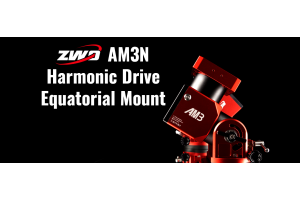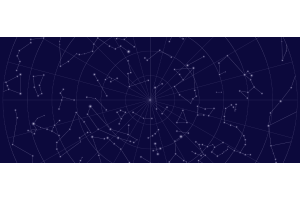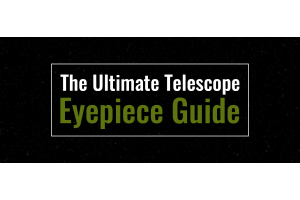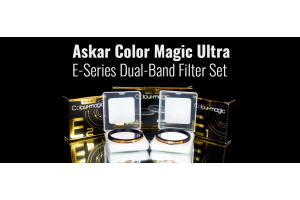dobsonian
Dobsonians attract more people to astronomy since a starry sky becomes a delight for an individual who is not a good candidate for a costly telescope. The outstanding feature of Dobsonian telescopes lies in their sophisticated yet distinctive design. Okay, unlike the elaborate equatorial and alt-azimuth mount of the standard telescopes, the wood mount of the Dobsonian telescope is simple, cheap, and easy to work with.
The invention eliminates the expensive requirement for intricate mounts and makes the telescope more flexible. Regularly, owners may need to do maintenance on some parts of Dobsonian telescopes; hence, they should avail of some vital maintenance and telescope set-up guides to postpone the degradation of the Dobsonian telescope. Here are some helpful tips:
- Collimation: This can be a function of the contrast between different qualities and the effects. It might be advisable to readjust the focus to avoid any forms of diffraction and loss of images. It is incredible to discover the lunar movement and throw our attention to the distant galaxies. Then, we can see through it that the immensity of the cosmos.
- Storage: Store the telescope in a clean and dry room to avoid environmental factors such as dust and moisture. The lithium lenses shouldn't remain uncovered when you are not wearing them. To prevent scratches and damage, it is suggested that they be covered.
- Transport: Control the transport of the tube and the carrier of the telescope in boxes of the right size and several of these types.
- Cleaning: Now toss the scrubby pads and polish off the glass with a softer cloth. This may not seem big, but it can scratch and damage components such as stabilizers, mounts, etc.
- Lubrication: It is also important to frequently keep up with maintenance needs, such as occasional lubrication and replenishing of the lubricant, to keep up with the most optimal power output.
- Alignment: Make sure you examine the location of the finder scope and the eyepiece before an observation session, not disorienting the object tracking.
Introducing the Dobsonian Telescope
The major component of a Dobsonian telescope is a significant primary mirror. It traps and returns light to create unique pictures, making Dobsonians masters of presenting deep-sky objects and barely visible heavenly mysteries. Dobsonians are about simplicity and accessibility, finally giving you a reason to get involved in the hobby of stargazing you have been so eager for.
When it comes to unlocking celestial secrets, the aperture of astronomy telescopes is crucial. The aperture, which refers to the mirror's diameter or lens, is the standout feature determining how much light your Dobsonian telescope can capture.
Telescopes from Dobson make hobby astronomy accessible to ordinary people, enabling them to discover the Milky Way Corps or other galaxies since sophisticated equipment is not necessary. Their low prices and ease of transportation have made astronomy a learning possibility for everyone, notwithstanding the limitation of financial means.
They can increase the connection between astronomy organizations and stars through star parties and outreach programs. Dobsonian telescope manufacturers adapted by creating collapsible designs and GoTo systems, and later models feature high-quality optics.

Short Compilation of Popular Dobsonian Telescopes
Why is this the best Dobsonian in the market?
Travel to the final frontier with Apertura AD8. This undoubtedly is the best-looking Dobsonian telescope. The navel of the nebula boasts a brilliant 8.0-inch diffraction-limited mirror, a marvelous focal ratio of f/5.9, and an inspiring 1200mm focal length that is indeed a strong point narrating the difference it has from its competitors. Teagan, who knows his technical stuff at Highpoint Scientific, has investigated the Aperture AD8 Dobsonian and now presents us with his detailed assessment in this review.
The Apertura AD8 Dobsonian telescope rules over the rest of the class, boasting such advanced features as ultimate optics, precise construction, and ease of use. The AD8's 8-inch diffraction-limited mirror offers astronomers an unmatched performance in tracking down the elusive faint deep-sky objects such as galaxies and nebulae, giving a glimpse of our universe beyond the imagination. The telescope's impressive focal ratio of f/5.9 and its extending focal length of 1200mm contribute to the high performance of the telescope, and the astronomer will not miss any detail when watching the sky wonders. Taiwan is the place of production. The model AD8 surpasses most of its rivals in many aspects, particularly fashioning a functional design that the user can rely upon and use repeatedly.
With its unique feature that other telescopes in its class don't have, this systematic, thoughtful design and an accessory pack makes it stand out above the others. An object that can use dual-speed and focuser coupled with an upgraded laser collimator tends to avail the processes of observation. The kit, on the other hand, makes the telescope's optical prowess spectacular. The AD8 includes a fan, the highest quality bearings, and a balance adjustment. These developments were customer-inspired engineering that proffer solutions that address the needs of amateur astronomers.
Yet it is not wise to rely on a Dobsonian for astrophotography as the earth's rotation and no tracked movement will turn the stars into streaks at high magnifications. On the other hand, reasonable expectations should still take one somewhere, and beginners can try astrophotography. Check out the Apertura Roll Easy Kit for Dobsonian Telescopes: Installing Instruction and Apertura Roll Easy Kit Installation Book | Review & Assembly for deeper insight into the telescope's capabilities.

Are you ready to jump on astrophotography with your Apertura Dobsonian? Buckle up for a heavenly ride, but note that long exposures are off the table due to the lack of tracking. Yet, fear not! Snap the Moon, planets, and snappy shots of bright nebulae. Are you wondering why astrophotography isn't a Dobsonian forte? Blame the Earth's rotation and the lack of tracking, causing streaked stars at high magnifications. But, with realistic expectations, basic astrophotography is still a go!
In your cosmic toolbox for Dobsonian astrophotography, smartphone adapters like Apertura Smartphone Adapter or Celestron NexYZ are perfect for lunar and short-sky exposures. For DSLRs, ensure focus compatibility and address the prime focus glitch with a Barlow lens. DSLR adapters, such as M42 or M48 T-rings, and a reliable T-mount like Baader Planetarium T-2 Nose Piece are indispensable tools. The cosmos eagerly awaits your visual feast!
Are you capturing the moon's allure with your Dobsonian smartphone? Adapter up! Combined with lunar wonders, your smartphone's magic can create stunning compositions. Alternatively, use a DSLR for epic lunar composites. No tracking? No problem! Close-up lunar shots with a Barlow lens, a nod to Microsoft Image composite editor —a captivating lunar masterpiece unfolds!
Planetary snapshots with your Dobsonian present a challenge. How do you tackle it? Planets, being far and tiny, demand magnification. For smartphones or DSLRs, eyepiece projection or a 3-5x Barlow lens steals the show. However, keep in mind that more zoom equals planets in motion! What about the ISS? Game on! Dobsonians track the ISS well. Zoom in with a 2-3x Barlow and a DSLR, employ swift hands, quick exposures, and a touch of luck—solar panels and ISS details await your cosmic photojournalist skills. Aim, shoot, and reveal the wonders of the celestial untold mysteries!

The Celestron StarSense Explorer Dobsonian telescope offers a unique way to explore the stars, blending classic Dobsonian mount design with modern technology. Setting up the telescope is easy but only requires simple assembly and alignment. Once assembled, users place their smartphone into the provided dock and open the StarSense Explorer app. This app uses advanced technology to analyze the night sky, accurately identifying stars and other celestial objects in real time. Users can then effortlessly align their telescope utilizing the app's guidance, eliminating the need for manual star alignments.
With the StarSense Explorer app, finding celestial objects becomes intuitive for astronomers of all levels. In just 15 minutes, users can explore a curated list of 15 fascinating celestial objects, guided by the app's easy-to-use interface and precise tracking. This seamless merging of technology with traditional Dobsonian design makes the Celestron StarSense Explorer Dobsonian telescope an attractive choice for beginners and seasoned astronomers.






